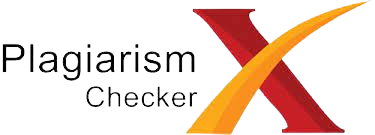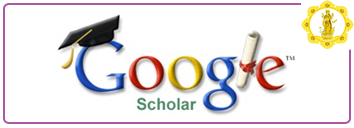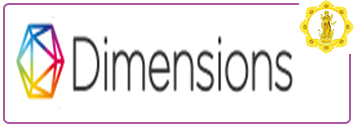PENERAPAN METODE BLENDED LEARNING DALAM PEMBELAJARAN PENDIDIKAN AGAMA HINDU DAN BUDI PEKERTI PADA SISWA KELAS V DI SD NEGERI 3 SANUR
Metode Blended Learning, Pendidikan Agama Hindu dan Budi Pekerti
DOI:
https://doi.org/10.25078/japam.v4i01.3055Keywords:
Blended Learning Method, Hindu and Buddhist Religious Education CharacterAbstract
The general objective of this research is to provide accurate and clear information to find out the application of the blended learning method, especially in Hindu religious and ethical education in learning at SD Negeri 3 Sanur and to gain clarity about the application of the blended learning method carried out during the Covid-19 period. This study specifically aims to explain the blended learning method in learning Hindu religious education and morals for fifth grade students at SD Negeri 3 Sanur, to explain the process of the blended learning method in learning Hindu religious education and morals for fifth grade students at SD Negeri 3 Sanur, to explain the implications of the blended learning method in learning Hindu religious education and ethics towards knowledge, attitudes, skills in fifth grade students at SD Negeri 3 Sanur. This research is classified as descriptive qualitative research. In collecting data, researchers used non-participant observation techniques, unstructured interview techniques, and document study techniques to obtain appropriate data at the research location. The results of the application of the blended learning method in learning Hindu religious education and morals in class V students at SD Negeri 3 Sanur can be viewed from aspects such as characteristic shape, study space, components of the blended learning method, then the process of the blended learning method consists of planning the blended learning method, the process of implementing the blended learning method,
References
Arifin, M., & Abduh, M. (2021). Peningkatan Motivasi Belajar Model Pembelajaran Blended Learning. Jurnal Basicedu, 5(4), 2339-2347.
Dwiyanto. 2020. Menyiapkan Pembelajaran dalam memasuki “New Normal” dengan Blended Learning.
Gage, N.L., & Berliner, D. 1984. Educational Psychology. Second Edition, Chicago: Rand Mc. Nally.
Hendarita, Yane. 2018. Model Pembelajaran Blended Learning dengan Media Blog, Jakarta: Pustekkom Kemendikbud.
Hidayati, N. (2013), The Impact of the School Safety Zone on Passenger Car Equivalent Values in Indonesian Urban Roads, Thesis, The University of Leeds.
Iqbal, Hassan. 2002. Metodelogi Penelitian dan Aplikasi. Jakarta: Raja Grafindo Persada.
Istiningsih, S & Hasbullah, H. 2015. Blended Learning. Trend Strategi Pembelajaran Masa Depan. Jurnal Elemen,I. 49-56.
Kanuka. (2009). Learning in Communities of Inquiry: A Review of the Literature. Journal Of Distance Education Revue De L’éducation À Distance 2009 Vol. 23, No. 1.
Kemendikbud. (2016). Permendikbud Nomor 22 Tahun 2016 Tentang Standar Proses Pendidikan Dan Menengah. Jakarta: Kemendikbud.
Kemendikbud. (2020). Surat Edaran Nomor 4 Tahun 2020 Tentang Pelaksanaan Kebijakan Pendidikan Dalam Masa Darurat Penyebaran Coronavirus Disease (Covid-19). Kementrian Pendidikan dan Kebudayaan Republik Indonesia.
Maskar, S., & Wulantina, E. (2019). Persepsi Peserta Didik terhadap Metode Blended Learning dengan Google Classroom. Jurnal Inovasi Matematika, 1(2), 110- 121.
Morrar, Rabeh, dkk. 2017. The Fourth Industrial Revolution (Industry 4.0): A Social Innovation Perspective. Technology Innovation Management Review: Volume 7, Issue 11.
Onta, M.R. 2018. Efektivitas Penerapan Model Blended Learning Dengan Menggunakan Media Pembelajaran Quipper School Ditinjau Dari Motivasi Belajar Dan Hasil Belajar Siswa Kelas X Tkj-A Smk Jakarta Tahun Ajaran 2017/2018. Skiripsi. Fakultas Keguruan dan Ilmu Pendidikan. Universitas Sanata Dharma: Yogyakarta.
Pendidikan Nasional. 2008. Kamus Besar Bahasa Indonesia. Edisi Keempat Jakarta: Balai Pustaka.
Purnama, Rianto. FRONT MATTER JURNAL EKOLOGI KESEHATAN VOL 19 NO. 2 TAHUN 2020. Jurnal Ekologi Kesehatan, 2020, 19.2.
Rahyubi, H. (2012). Teori-Teori Belajar Dan Aplikasi Pembelajaran Motorik. Bandung: Nusa Media.
Sagala, Syaiful. 2009. Kemampuan Profesional Guru dan Tenaga Kependidikan. Bandung: Alfabeta.
Sanjaya, Wina. 2012. Strategi Pembelajaran Berorientasi Standart Proses Pendidikan. Jakarta: Kencana Prenada Media Grup.
Silalahi, Amin. 2005, Strategi Pelatihan dan Pengembangan Sumber Daya Manusia, Surabaya, Batavia Press.
Vernadakis, Nikolaos A. 2014. A COMPARASION OF STUDENT KNOWLEDGE BETWEEN TRADITIONAL AND BLENDED INSTRUCTION IN A PYHSICIAL EDUCATION IN EARLY CHILDHOOD COURSE. Turkish Online Jurnal Of Distance: Vol 15(1), Issue 99-113.









